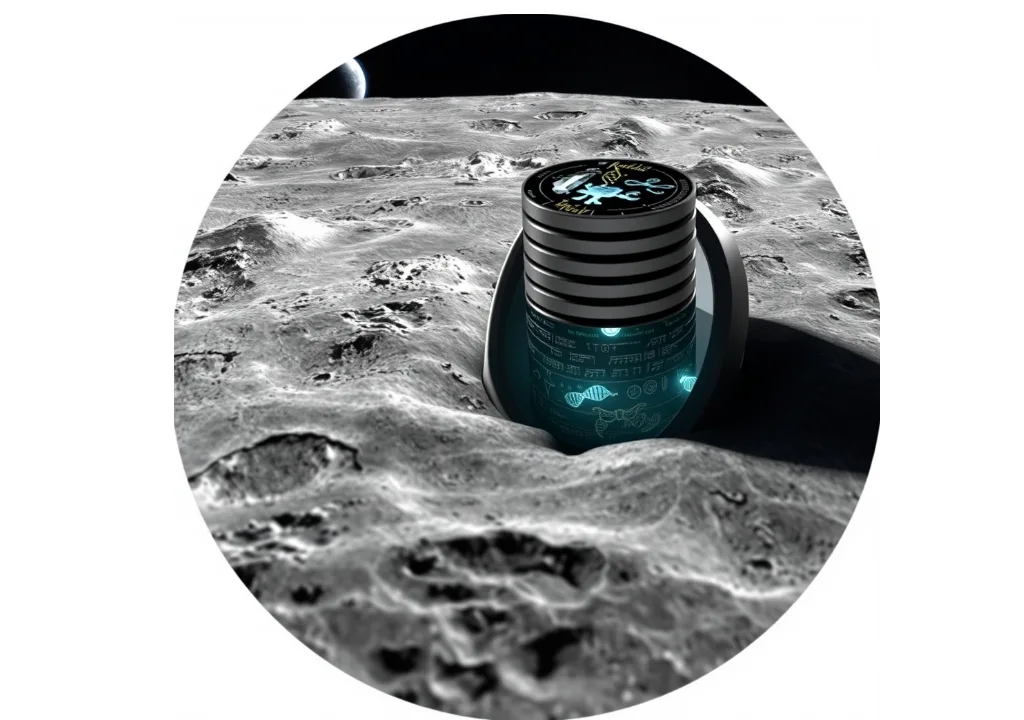‘Sanctuary on the Moon’ is a lunar time capsule that will offer a comprehensive guide to Earth’s life for future generations.
Nuit-Saint-Georges, a small French village with a population just over 5,000, holds a special connection to the moon. It’s the birthplace of 19th-century astronomer Felix Tisserand, after whom the Tisserand crater is named on the lunar surface. Tisserand’s contemporary, Jules Verne, wrote From the Earth to the Moon, which features a celebratory bottle of wine from Nuit-Saint-Georges. Later, Apollo 15 astronauts, who passed through the village, were gifted a wine called Cuvee Terre Lune, inspiring them to name another crater after it. Today, a square in the village is named Place du Cratere Saint-Georges in honor of these lunar links.
Now, a new project will further cement the bond between the village and the moon, as well as humanity’s legacy. Sanctuary on the Moon is an international initiative aiming to create a lunar time capsule that will preserve a detailed guide to our civilization, set to launch with NASA’s Artemis mission in the coming years. The project was conceived by Benoit Faiveley, a native of Nuit-Saint-Georges.
Inspired by the Golden Records affixed to the Voyager spacecraft in 1977, which were intended for potential extraterrestrial discovery, Sanctuary on the Moon aims to preserve knowledge not for aliens but for humanity’s descendants in the distant future. The time capsule will consist of 24 discs, each containing seven billion pixels of information, covering diverse topics from Matter and Atoms to Biology and human genomes. The discs will be made of sapphire and feature both text and images visible to the naked eye, with magnification providing even more detail.
The project’s founders are ensuring that the capsule will remain readable even in the distant future. The discs will feature a Rosetta Stone-like guide to human language and a key explaining the International System of Units. Faiveley’s vision is to communicate not only scientific knowledge but also the culture and artistry of our time, blending information and aesthetics.
Key to this effort is the inclusion of the human genome, with four genomes from “super seniors” carefully chosen to represent humanity’s genetic makeup. These genomes will be accompanied by art and music, including the song Moon Above by Norwegian band Flunk. Though the total number of pixels may seem vast, Faiveley notes it’s a small amount to encapsulate humanity’s essence.
Unlike the Golden Records, this time capsule is not intended for extraterrestrial life but for our descendants, who will likely find it millions of years from now. The project encourages reflection on humanity’s past and its uncertain future, aiming to answer profound questions about who we are and what we’ll leave behind. With ongoing concerns over climate change, nuclear threats, and societal challenges, Faiveley stresses that Sanctuary is not an attempt at survivalism but a cultural statement about our fragile existence.
Drawing inspiration from the ancient Egyptian sage Ptahhotep, Faiveley concludes: “It is good to speak to the future. It will listen.”

